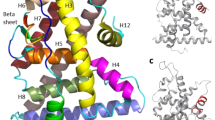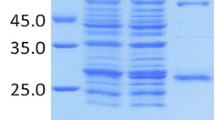Abstract
Antioxidant food additives were routinely used for increasing the keeping quality of packaged food items. Butylated Hydroxyanisole (BHA) is one of the most widely used synthetic phenolic antioxidants of such kind. Although quantity of antioxidants in packaged eatables and admissible daily intake (ADI) per person per day are limited by laws, the urbanisation and changes in lifestyle has cross these limits. Although studies on BHA has been carried out, there exists a great deal of uncertainty about the exact molecular mechanism of interaction of BHA with various receptors in the body. Since earlier reports suggested BHA plausibly interferes with reproductive system development, we opted docking of critical receptors of endogenous hormones controlling growth and development of reproductive system with BHA. Nuclear receptors of estrogen (ER), androgen (AR) and progesterone (PR) were selected for this purpose. This manuscript describes the comparison of binding pattern of BHA towards AR, ER and PR along with their agonists and antagonist. Lamarckian Genetic Algorithm of AutoDock 4.0 was used for analysing the mode of binding of ligands with the receptors. It is evident form the docking studies that, BHA exhibited similar binding pattern` with antagonists of AR and agonists of ER. But the interaction of BHA with PR was not compatible with either agonists or antagonists. The docking patterns produced could reliably demonstrate the interactions of BHA with selected receptors and also predict its possible agonistic and antagonistic action.





Similar content being viewed by others
References
Ahirwar R et al (2016) In silico selection of an aptamer to estrogen receptor alpha using computational docking employing estrogen response elements as aptamer-alike molecules. Nature Publishing Group, Berlin
Anbalagan M, Rowan BG (2015) Estrogen receptor alpha phosphorylation and its functional impact in human breast cancer. Mol Cell Endocrinol 418:264–272. https://doi.org/10.1016/j.mce.2015.01.016
Carocho M, Morales P, Ferreira ICFR (2018) Trends in food science and technology antioxidants : reviewing the chemistry, food applications, legislation and role as preservatives’, trends in food science and technology. Elsevier 71:107–120. https://doi.org/10.1016/j.tifs.2017.11.008
DeLano WL (2002) The PyMOL molecular graphics system (http://www.pymol.org)
Diamanti-kandarakis E et al (2009) Endocrine-disrupting chemicals : an endocrine. Endocr Rev 30:293–342. https://doi.org/10.1210/er.2009-0002
Gelmann EP (2002) Molecular biology of the androgen receptor. J Clin Oncol 20(13):3001–3015. https://doi.org/10.1200/JCO.2002.10.018
Hill KK et al (2012) Structural and functional analysis of domains of the progesterone receptor. Mole Cell Endocrinol Elsevier Ireland Ltd 348(2):418–429. https://doi.org/10.1016/j.mce.2011.07.017
Hwan GK et al (2005) Evaluation of estrogenic and androgenic activity of butylated hydroxyanisole in immature female and castrated rats. Toxicology 213(1–2):147–156. https://doi.org/10.1016/j.tox.2005.05.027
Iverson F (1995) Phenolic antioxidants: Health protection branch studies on butylated hydroxyanisole. Cancer Lett 93(1):49–54. https://doi.org/10.1016/0304-3835(95)03787-W
Jeong SH et al (2005) Effects of butylated hydroxyanisole on the development and functions of reproductive system in rats. Toxicology 208(1):49–62. https://doi.org/10.1016/j.tox.2004.11.014
Jobling S et al (1995) A variety of environmentally persistent chemicals, including some phthalate plasticizers, are weakly estrogenic. Environ Health Perspect 103(6):582–587. https://doi.org/10.1289/ehp.95103582
Joseph R, Binitha RN (2020) Materials Today : Proceedings Screening of potential antiandrogenic phytoconstituents and secondary metabolites of Terminalia chebula by docking studies. Mater Today Pro Elsevier Ltd 25:316–320. https://doi.org/10.1016/j.matpr.2020.01.593
Lee H et al (2013) Molecular mechanism ( s ) of endocrine-disrupting chemicals and their potent oestrogenicity in diverse cells and tissues that express oestrogen receptors. J Cell Mol Med 17(1):1–11. https://doi.org/10.1111/j.1582-4934.2012.01649.x
Li X et al (2016) Effects of butylated hydroxyanisole on the steroidogenesis of rat immature Leydig cells. Toxicol Mech Methods 26(7):511–519. https://doi.org/10.1080/15376516.2016.1202367
Morris GM et al (1998) Automated Docking Using a Lamarckian Genetic Algorithm and an Empirical Binding Free Energy Function. J Comput Chem 19(14):1639–1662. https://doi.org/10.1002/(SICI)1096-987X(19981115)19:14%3c1639::AID-JCC10%3e3.0.CO;2-B
Opinion S (2011) Scientific opinion on the re-evaluation of butylated hydroxyanisole – BHA (E 320) as a food. EFSA J. https://doi.org/10.2903/j.efsa.2011.2392
Opinion S (2012) Scientific opinion on the re-evaluation of butylated hydroxytoluene BHT (E 321) as a food additive. EFSA J 10(3):1–43. https://doi.org/10.2903/j.efsa.2012.2588
Orton F et al (2014) Mixture effects at very low doses with combinations of anti-androgenic pesticides, antioxidants, industrial pollutant and chemicals used in personal care products. Toxicol Appl Pharmacol 278(3):201–208. https://doi.org/10.1016/j.taap.2013.09.008
Paul G, Binitha RN, Sunny F (2018) Fish short-term reproductive assay for evaluating the estrogenic property of a commonly used antioxidant, butylated hydroxyanisole. Curr Sci 115(8):1584. https://doi.org/10.18520/cs/v115/i8/1584-1587
Pop A et al (2013) Evaluation of the possible endocrine disruptive effect of butylated hydroxyanisole, butylated hydroxytoluene and propyl gallate in immature female rats. Farmacia 61(1):202–211
Pop A et al (2016) ‘Individual and combined in vitro (anti)androgenic effects of certain food additives and cosmetic preservatives. Toxicol Vitro. 32:269–277. https://doi.org/10.1016/j.tiv.2016.01.012
Pop A et al (2018) Estrogenic and anti-estrogenic activity of butylparaben, butyl- ated hydroxyanisole, butylated hydroxytoluene and propyl gal- late and their binary mixtures on two estrogen responsive cell lines. J Appl Toxicol. https://doi.org/10.1002/jat.3601
Rashtian J, Chavkin DE, Merhi Z (2019) Water and soil pollution as determinant of water and food quality/contamination and its impact on female fertility. Repro Biol Endocrinol 2:1–13. https://doi.org/10.1186/s12958-018-0448-5
Schrader TJ (2000) Examination of selected food additives and organochlorine food contaminants for androgenic activity in vitro. Toxicol Sci 53(2):278–288. https://doi.org/10.1093/toxsci/53.2.278
Sippl W (2000) Receptor-based 3D QSAR analysis of estrogen receptor ligands - merging the accuracy of receptor-based alignments with the computational efficiency of ligand-based methods. J Comput Aided Mol Des 14(6):559–572. https://doi.org/10.1023/A:1008115913787
Soubra L et al (2007) Dietary exposure of children and teenagers to benzoates, sulphites, butylhydroxyanisol ( BHA ) and butylhydroxytoluen ( BHT ) in Beirut ( Lebanon ). Regul Toxicol Pharmacol 47:68–77. https://doi.org/10.1016/j.yrtph.2006.07.005
Tamura H et al (2006) Structural basis for androgen receptor agonists and antagonists: interaction of SPEED 98-listed chemicals and related compounds with the androgen receptor based on an in vitro reporter gene assay and 3D-QSAR. Bioorg Med Chem 14(21):7160–7174. https://doi.org/10.1016/j.bmc.2006.06.064
Yang WH et al (2010) Exploring the binding features of polybrominated diphenyl ethers as estrogen receptor antagonists: docking studies. SAR QSAR Environ Res 21(3):351–367. https://doi.org/10.1080/10629361003773971
Zhang S et al (2019) Endocrine disruptors of inhibiting testicular 3β-hydroxysteroid dehydrogenase. Chemico-Biol Interact Elsevier 303:90–97. https://doi.org/10.1016/j.cbi.2019.02.027
Acknowledgement
We would like to acknowledge University Grands Commission (UGC) for providing JRF fellowship.
Funding
Subin Balachandran receives Junior Research Fellowship (JRF) Ref. No.:908/(CSIR-UGC NET JUNE 2018) from University Grands Commission (UGC), New Delhi, India.
Author information
Authors and Affiliations
Corresponding author
Ethics declarations
Conflict of interest
The authors declare that they have no conflict of interests.
Ethical approval
None.
Additional information
Publisher's Note
Springer Nature remains neutral with regard to jurisdictional claims in published maps and institutional affiliations.
Rights and permissions
About this article
Cite this article
Balachandran, S., Binitha, R.N. An in silico approach to study the interaction of BHA with selected steroid hormone receptors and investigating it’s agonistic and antagonistic properties. In Silico Pharmacol. 9, 16 (2021). https://doi.org/10.1007/s40203-020-00070-x
Received:
Accepted:
Published:
DOI: https://doi.org/10.1007/s40203-020-00070-x




